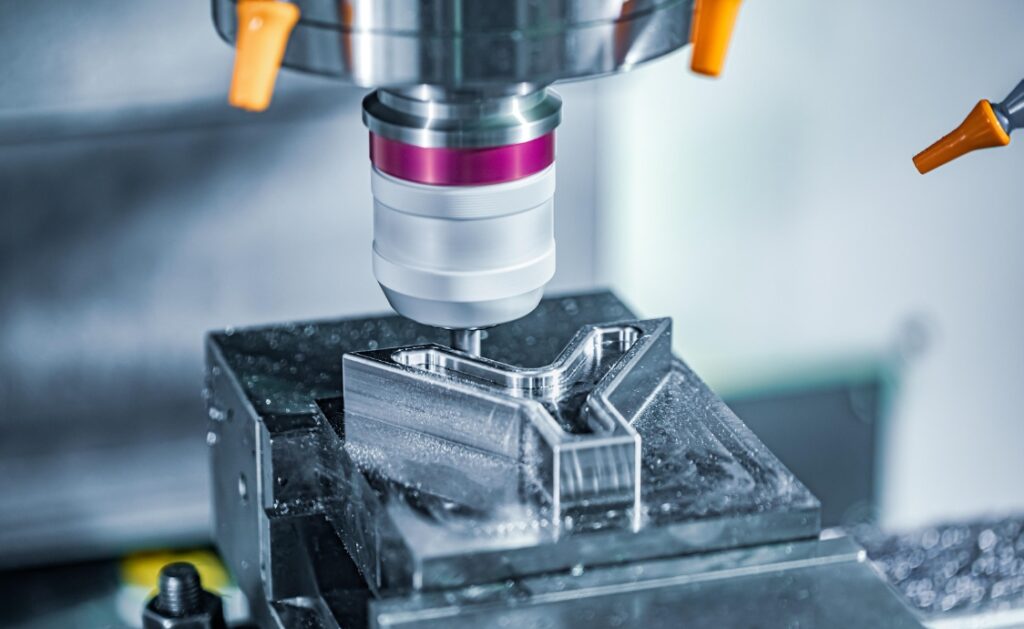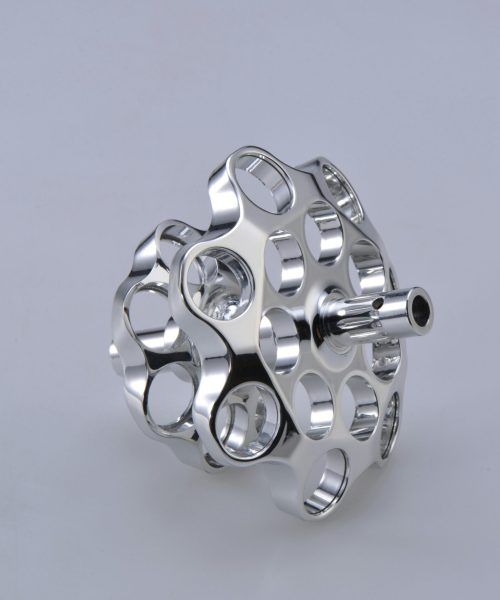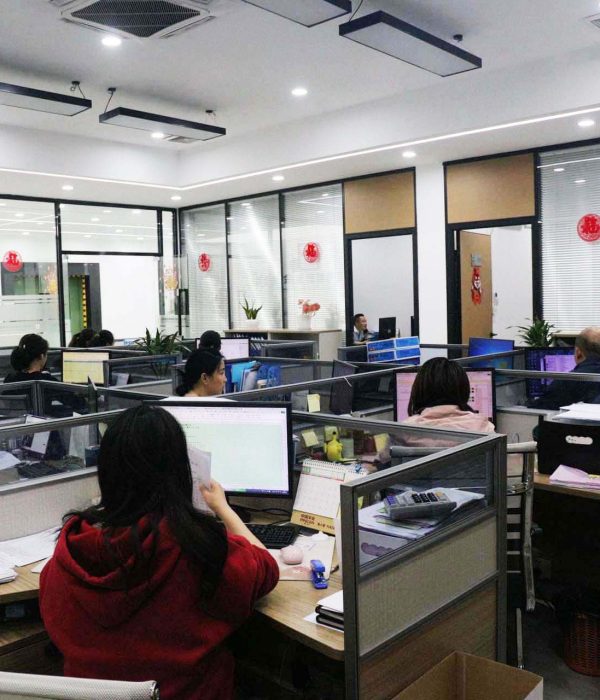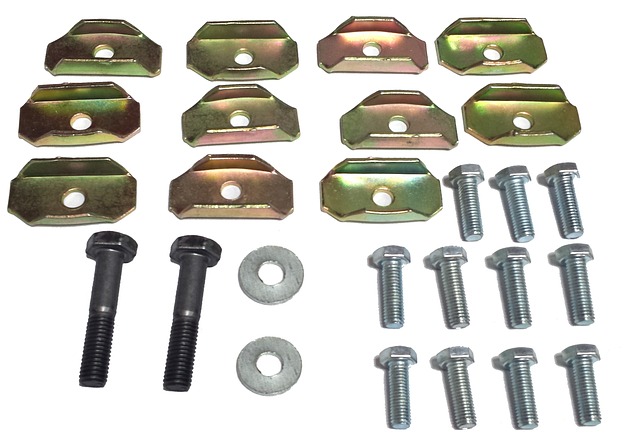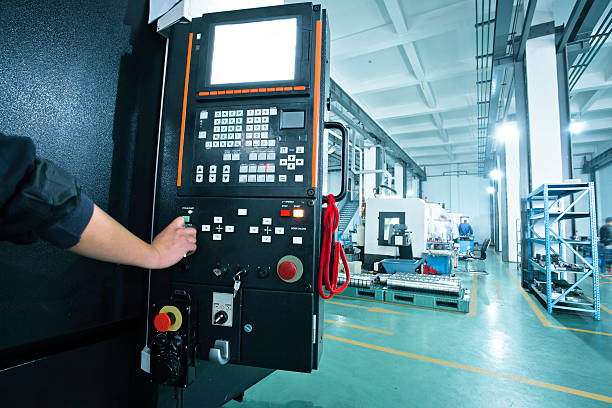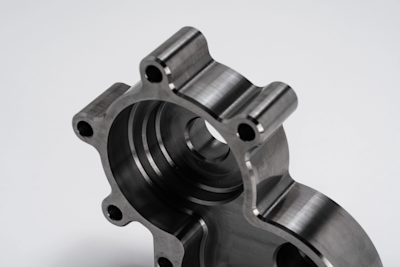Bu makale, 5 eksenli CNC işleme hizmetleri dünyasının derinliklerine inerek teknolojiyi, geniş uygulama yelpazesini, sunduğu hassasiyet seviyesini ve üretimdeki gelecek potansiyelini açıklayacaktır.
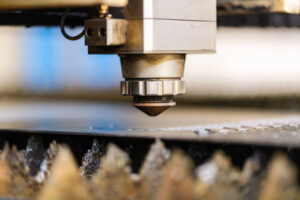

5 Eksen CNC İşleme Nedir?
5 eksenli CNC işleme hizmetlerinin faydalarını ve uygulamalarını keşfetmeden önce, nasıl çalıştığını anlamak önemlidir. "5 eksen" terimi, kesici takımın aynı anda hareket edebileceği yönlerin sayısını ifade eder. 3 eksenli işlemede kesici takım X, Y ve Z eksenleri boyunca hareket eder. Ancak 5 eksenli işlemede, X veya Y düzlemleri etrafında tipik olarak dönme eksenleri (A, B veya C) olmak üzere iki eksen daha eklenir. Bu, harekette çok daha fazla esneklik ve daha karmaşık şekiller sağlar.
5 eksenli CNC işleme şu şekilde çalışır:
- X Ekseni: Aleti sola ve sağa hareket ettirir.
- Y Ekseni: Aleti ileri ve geri hareket ettirir.
- Z Ekseni: Aleti yukarı ve aşağı hareket ettirir.
- A Ekseni: X ekseni etrafında döner.
- B Ekseni: Y ekseni etrafında döner.
Birlikte çalışan bu beş eksen sayesinde üreticiler karmaşık geometrileri tek bir kurulumda oluşturarak üretim süresini kısaltabilir ve verimliliği artırabilir.
5 Eksen CNC İşleme Hizmetlerinin Faydaları
Manuel müdahale olmadan parçaları çoklu açılardan işleme yeteneği, 5 ekseni CNC işleme hizmetleri karmaşık ve son derece hassas bileşenler için tercih edilen seçimdir. İşte temel avantajlar:
- Daha Yüksek Hassasiyet: Parçaları tek bir kurulumda farklı açılardan işleyerek, 5 eksenli işleme birden fazla fikstür ihtiyacını ortadan kaldırır. Bu, insan hatası riskini azaltır ve daha yüksek hassasiyet sağlar; bu da özellikle havacılık ve tıbbi cihaz üretimi gibi sıkı toleranslar gerektiren sektörlerde önemlidir.
- Geliştirilmiş Esneklik: İlave eksenler, üreticilerin 3 veya 4 eksenli makinelerle imkansız veya verimsiz olabilecek daha karmaşık ve ayrıntılı parçalar üretmesine olanak tanır. Bu esneklik, alt kesimler, kavisli yüzeyler ve karmaşık şekiller içeren parçaların tasarlanmasında kritik öneme sahiptir.
- Daha Hızlı Üretim: 5 eksenli makineler aynı anda birden fazla düzlemde kesim yapabildiğinden, her bir parça için gereken kurulum sayısını önemli ölçüde azaltır. Bu da daha hızlı döngü süreleri ve sonuç olarak daha düşük üretim maliyetleri sağlar.
- Geliştirilmiş Yüzey İşlemleri: Parçaya farklı açılardan yaklaşan takım sayesinde 5 eksenli işleme, daha az işleme sonrası çalışma gerektirerek daha pürüzsüz yüzey finisajları elde edebilir. Bu, özellikle yüksek kaliteli estetik finisaja ihtiyaç duyan bileşenler için değerlidir.
- Azaltılmış Takım Aşınması: İş parçasına birden fazla yönden yaklaşabilme özelliği, kesici takımlar üzerindeki gerilimi en aza indirerek kullanım ömürlerini uzatır ve işleme sürecindeki sarf malzemelerinin toplam maliyetini azaltır.
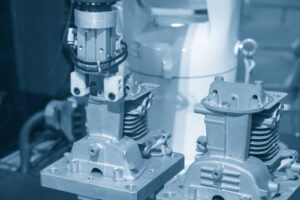

5 Eksen CNC İşleme Hizmetleri Uygulamaları
Çok yönlülüğü ve hassasiyeti sayesinde 5 eksenli CNC işleme hizmetleri çok çeşitli sektörlerde kullanılmaktadır. Şimdi bazı temel uygulamalara daha yakından bakalım.
1. Havacılık ve Uzay Endüstrisi
Havacılık ve uzay sektörü belki de 5 eksenli CNC işlemenin en büyük faydalanıcılarından biridir. Uçak bileşenleri genellikle uçağın performansını ve güvenliğini sağlamak için titiz hassasiyet gerektiren karmaşık, kavisli yüzeylere sahiptir. Türbin kanatları, motor bileşenleri ve yapısal elemanlar gibi parçaların katı toleransları karşılaması gerekir, bu da 5 eksenli işlemeyi havacılık ve uzay endüstrisi için vazgeçilmez kılar.
Ayrıca, havacılıkta kullanılan titanyum ve yüksek mukavemetli alüminyum alaşımları gibi hafif malzemelerin geleneksel yöntemlerle işlenmesi zordur. 5 eksenli işlemenin esnekliği, optimum kesme açılarına izin vererek takım aşınmasını azaltır ve bu sert malzemelerin işleme verimliliğini artırır.
2. Otomotiv Endüstrisi
Otomotiv dünyasında yenilik ve hassasiyet her şeyden önemlidir. Performans otomobillerinden elektrikli araçlara kadar üreticiler sürekli olarak mümkün olanın sınırlarını zorlamaktadır. 5 eksenli CNC işleme hizmetleri, araç performansını ve güvenliğini artıran karmaşık motor parçalarının, dişli kutularının ve karmaşık iç bileşenlerin oluşturulmasını sağlar.
Ayrıca, 5 eksenli işleme, üreticiler daha çevreci, daha sürdürülebilir çözümler için çalışırken otomotiv endüstrisinde kilit bir odak noktası olan mukavemetten ödün vermeden yakıt verimliliğini artıran hafif bileşenlerin prototiplenmesine ve üretilmesine olanak tanır.
3. Tıbbi Cihazlar
En küçük hatalar bile önemli risklere yol açabileceğinden, tıp alanı yüksek düzeyde hassasiyet gerektirir. İster cerrahi aletler, ister ortopedik implantlar veya dişçilik cihazları üretilsin, 5 eksenli CNC işleme, tıbbi sınıf bileşenler için gereken sıkı toleransları ve yüzey kaplamalarını sağlar.
Örneğin, karmaşık eklem replasmanları veya kemik plakaları 5 eksen teknolojisi kullanılarak üretilebilir ve her hastanın anatomisine uyan ayrıntılı ve özelleştirilmiş şekillere izin verir. Ayrıca, titanyum ve paslanmaz çelik gibi biyouyumlu malzemeler bu uygulamalarda yaygın olarak kullanılır ve 5 eksenli işleme bu zorlu malzemelerle çalışmayı kolaylaştırır.
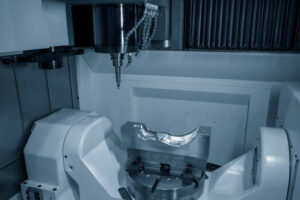

4. Robotik ve Otomasyon
Otomasyona olan talep arttıkça, hassas robotik bileşenlere olan ihtiyaç da artmaktadır. Robotik kollar, mafsallar ve dişli mekanizmaları, sorunsuz ve güvenilir çalışma sağlamak için son derece hassas bir şekilde üretilmelidir. 5 eksenli CNC işleme hizmetleri, modern robotlar için gerekli olan karmaşık, çok yönlü bileşenlerin oluşturulmasını mümkün kılar.
Ayrıca, robotlar daha karmaşık hale geldikçe, hafif ve dayanıklı malzemelere duyulan ihtiyaç da çok önemli hale gelmektedir. 5 eksenli işleme alüminyum, titanyum ve kompozitler gibi gelişmiş malzemeleri kolayca işleyerek robotun genel verimliliğine katkıda bulunan parçalar üretebilir.
5. Enerji Sektörü
Enerji endüstrisi, özellikle petrol ve gaz ve yenilenebilir enerji sektörlerinde, türbinler, pompalar ve motorlar için büyük ölçüde karmaşık parçalara ihtiyaç duyar. Bu bileşenler genellikle sıkı toleranslar gerektirir ve yüksek basınçlara ve aşırı ortamlara dayanmaları gerekir. 5 eksenli CNC işleme hizmetleri, bu kritik bileşenleri üretmek için gerekli doğruluğu ve verimliliği sağlar.
Ayrıca, rüzgar türbinleri ve güneş enerjisi sistemleri de dahil olmak üzere büyüyen yenilenebilir enerji sektörü de 5 eksenli işlemenin sunduğu hassasiyet ve çok yönlülükten faydalanmaktadır. Türbin kanatları ve hassas dişliler gibi bileşenler enerji üretimini optimize etmek için gereklidir.
5 Eksen CNC İşlemede Hassasiyet
Hassasiyet, 5 eksenli CNC işleme hizmetlerinin kalbinde yer alır ve bu da onu kusursuz doğruluk gerektiren endüstriler için başvurulacak teknoloji haline getirir. Peki 5 eksen işlemeyi bu kadar hassas kılan nedir?
- Tek Kurulumla İşleme: 5 eksenli CNC işlemenin yüksek hassasiyetinin başlıca nedenlerinden biri, parçaları tek bir kurulumda işleyebilmesidir. Geleneksel 3 eksenli makineler genellikle bir parçanın farklı taraflarını işlemek için birden fazla kurulum gerektirir ve bu da yeniden konumlandırma sırasında hata riskini artırır. 5 eksenli işleme ile, parçalar iş tutucusundan çıkarılmadan birden fazla açıdan işlenir ve tüm süreç boyunca tutarlı doğruluk sağlanır.
- Sıkı Toleranslar: Havacılık, tıp ve savunma gibi sektörlerde genellikle ±0,001 inç (hatta daha dar) toleranslar gereklidir. 5 eksenli makineler bu titiz standartları karşılayabilir ve her parçanın gerekli özelliklere göre üretilmesini sağlar.
- Gelişmiş CNC Kontrolleri: Modern 5 eksenli CNC makineleri, kesme yolları, hızlar ve takım açılarında gerçek zamanlı ayarlamalar yapılmasını sağlayan sofistike yazılımlarla donatılmıştır. Bu, karmaşık geometriler veya işlenmesi zor malzemelerle çalışırken bile işleme sürecinin doğru kalmasını sağlar.
- Azaltılmış Takım Titreşimi: Takım titreşimi, işleme hatalarının önde gelen nedenlerinden biridir. 5 eksenli makineler daha kısa kesici takımlara ve daha optimize edilmiş kesme açılarına olanak tanıyarak takım titreşimini azaltır ve hassasiyeti artırır.
- Çok Yönlü İşleme: Takım iş parçasına birden fazla yönden yaklaşabildiğinden, 5 eksenli işleme en karmaşık geometrilerin bile hassas bir şekilde işlenmesini sağlar. Bu, özellikle 3 eksenli bir makine kullanılarak işlenmesi imkansız olan alt kesimler, açılı yüzeyler veya karmaşık ayrıntılara sahip parçalar için önemlidir.
5 Eksenli CNC İşleme Hizmetlerinin Geleceği
Sektörler daha fazla yenilik, verimlilik ve sürdürülebilirlik için çabalamaya devam ettikçe, 5 eksenli CNC işleme hizmetleri üretimin geleceğinde daha da önemli bir rol oynamaya hazırlanıyor. İşte bu teknolojinin geleceğini şekillendirecek temel trendlerden bazıları:
1. Otomasyon ve Akıllı Üretim
Endüstri 4.0 ve akıllı üretimin yükselişiyle birlikte CNC işleme giderek daha otomatik hale geliyor. Gelişmiş sensörler ve veri analitiği işleme sürecini gerçek zamanlı olarak izlerken, iş parçalarını yüklemek ve boşaltmak için artık robotlar kullanılıyor. Bu otomasyon seviyesi insan hatalarını azaltıyor, üretkenliği artırıyor ve daha karmaşık parçaların daha az manuel müdahale ile üretilmesini sağlıyor.
Gelecekte, 5 eksenli CNC makinelerinin, makinelerin birbirleriyle iletişim kurduğu ve veri analizine dayalı gerçek zamanlı ayarlamalar yaptığı tam otomatik üretim hatlarına daha da entegre olmasını bekleyebiliriz.
2. Katmanlı Üretim Entegrasyonu
Modern üretimdeki en heyecan verici gelişmelerden biri, eklemeli üretimin (3D baskı) CNC işleme ile entegrasyonudur. Üreticiler bu iki teknolojiyi birleştirerek, daha önce işlenmesi imkansız olan son derece karmaşık parçalar üretebilirler.
Örneğin, bir parça ağa yakın şekle 3D olarak basılabilir ve ardından istenen toleransları ve yüzey kaplamalarını elde etmek için 5 eksenli CNC işleme ile tamamlanabilir. Bu hibrit yaklaşım havacılık, otomotiv ve tıp endüstrilerinde halihazırda kullanılmaktadır ve önümüzdeki yıllarda daha da yaygınlaşması muhtemeldir.
3. İleri Malzemeler
Malzeme bilimi ilerledikçe, üstün mukavemet sunan yeni alaşımlar ve kompozitler geliştirilmektedir,
ısı direnci ve geleneksel malzemelere kıyasla dayanıklılık. Yüksek performanslı alüminyum alaşımları, titanyum ve karbon kompozitler gibi bu gelişmiş malzemeler, işleme için yeni zorluklar ortaya çıkarmaktadır. Ancak, 5 eksenli CNC işleme hizmetleri bu zorlukların üstesinden gelmek için iyi bir konumdadır.
Özellikle havacılık, savunma ve otomotiv gibi endüstriler, aşırı koşullara dayanması gereken bileşenler için bu malzemelere giderek daha fazla güveniyor. 5 eksenli makinelerin iş parçalarına birden fazla açıdan yaklaşma kabiliyeti, optimum kesme stratejilerine olanak tanıyarak takım aşınmasını azaltır ve sert, gelişmiş malzemelerle çalışırken hassasiyeti artırır.
4. Özelleştirme ve İsteğe Bağlı Üretim
Kişiselleştirilmiş ve özelleştirilmiş ürünlere yönelik müşteri talepleri arttıkça, üreticiler hızlı prototipleme ve talep üzerine üretim için 5 eksenli CNC işlemeye yöneliyor. Üreticiler, 5 eksenli işlemenin esnekliği sayesinde pahalı takımlara veya uzun teslim sürelerine ihtiyaç duymadan küçük partiler halinde özelleştirilmiş parçaları hızla üretebiliyor.
Bu eğilim, özellikle özelleştirilmiş implantların ve araba bileşenlerinin giderek daha fazla talep gördüğü tıbbi cihaz ve otomotiv sektörlerinde belirgindir. Gelecekte, 5 eksenli CNC işleme hizmetlerinin kitlesel özelleştirmeyi mümkün kılmada ve kişiselleştirilmiş parçalar için üretim sürelerini azaltmada daha da önemli bir rol oynamasını bekleyebiliriz.
5. Sürdürülebilirlik ve Verimlilik
Çevresel kaygılar arttıkça, üreticiler üzerinde atıkları azaltma ve karbon ayak izlerini düşürme baskısı da artmaktadır. 5 eksenli CNC işleme hizmetleri, malzeme kullanımını optimize ederek, birden fazla kurulum ihtiyacını azaltarak ve işleme süresini en aza indirerek bu hedeflere katkıda bulunabilir. Ayrıca, parçaların yeniden konumlandırılmadan birden fazla açıdan işlenebilmesi hurda malzemeyi azaltır ve genel verimliliği artırır.
CNC işlemede bir diğer sürdürülebilirlik trendi de çevre dostu soğutucu ve yağlayıcıların kullanılmasıdır. Geleneksel soğutucular çevreye zararlı olabilir, ancak modern 5 eksenli makineler giderek daha güvenli ve daha sürdürülebilir alternatif çözümler kullanmaktadır.
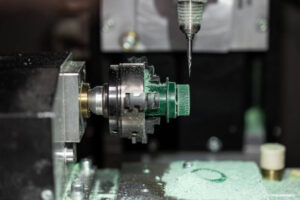

Sonuç
Günümüzün hızla gelişen üretim ortamında 5 eksenli CNC işleme hizmetleri, çok çeşitli sektörlerde karmaşık, yüksek hassasiyetli bileşenler üretmek için kritik bir teknoloji olarak öne çıkmaktadır. Havacılıktan tıbbi cihazlara, otomotivden enerjiye, 5 eksenli işlemenin çok yönlülüğü ve hassasiyeti, üreticilere dar toleranslara ve mükemmel yüzey kaplamalarına sahip karmaşık parçalar oluşturma olanağı sunar.
5 eksenli CNC işlemenin geleceği parlaktır; otomasyon, malzeme ve sürdürülebilir üretim alanlarındaki yenilikler bu teknolojinin yeteneklerini daha da geliştirmeye hazırdır. Endüstriler tasarım ve mühendisliğin sınırlarını zorlamaya devam ettikçe, 5 eksenli CNC işleme hizmetleri modern üretimin ön saflarında yer almaya devam edecek ve geleceğin zorluklarının üstesinden gelmek için gereken hassasiyeti, verimliliği ve esnekliği sağlayacaktır.
İster karmaşık havacılık ve uzay bileşenleri, ister tıbbi cihazlar veya otomotiv parçaları üretmek için güvenilir bir çözüm arıyor olun, 5 eksenli CNC işleme hizmetleri en zorlu uygulamalar için gereken hassasiyeti ve çok yönlülüğü sağlar. Üreticiler bu ileri teknolojiden yararlanarak yalnızca bugünün üretim zorluklarını aşmakla kalmaz, aynı zamanda yarının yeniliklerine de hazırlanabilir.
Bu kapsamlı 5 eksenli CNC işleme hizmetleri araştırması, modern üretimdeki kilit rolünü ortaya koymakta, uygulamaları, hassasiyeti ve gelecekteki gelişimi hakkında bilgi vermektedir. Bu teknoloji gelişmeye devam ettikçe, şüphesiz daha da fazla ilerlemeye yol açacak, hassasiyet ve verimliliğin çok önemli olduğu endüstrilerde vazgeçilmez bir araç haline gelecektir.
Belirli faydalara, uygulamalara ve gelecekteki trendlere odaklanan bu makale, 5 eksenli CNC işleme hizmetlerine insancıllaştırılmış ancak teknik bir genel bakış sunarak okuyucuların bu teknolojinin günümüz üretim dünyasında neden bu kadar hayati olduğunu anlamalarına yardımcı olmaktadır.
Referanslar:

